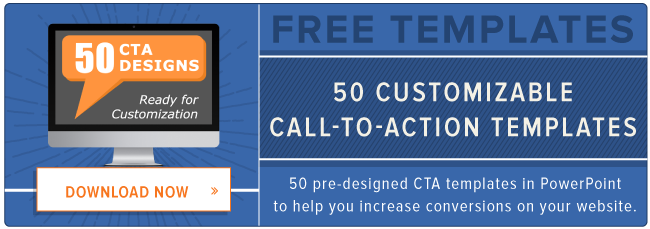How to Write a Call-to-Action That Gets Visitors Clicking

By Sam Lauron
Good writing matters in marketing. Being able to articulate ideas clearly is vital to capturing the attention of prospects. Let’s take a call-to-action (CTA) as an example.
If the copy you craft doesn’t draw visitors in, that can hurt your click-through rate, lead conversions, and sales.
In this blog post, we’ll discuss some vital copywriting lessons you should apply to your CTAs to drive traffic, generate more leads, and convert users into customers.
What is a call-to-action?
How to Write a Call-to-Action
What is a call-to-action?
A call-to-action (CTA) is a word or phrase that prompts a reader to take a desired action. In marketing, CTAs appear throughout campaign copy to convince your audience to take the next step down the sales funnel via a button or hyperlink.
Your CTA might prompt people to do one of the following actions:
- Subscribe to your email newsletter.
- Download an ebook.
- Sign up for an account.
If you want to convince more people to take the next step, your CTA must be compelling enough for them to click through. That’s why knowing how to write a CTA is essential.
How to Write a Call-to-Action
There’s a particular craft that goes into writing effective calls-to-action — it’s equal parts arts and science. Luckily for us, writing strong CTAs can be achieved with enough practice (or using a CTA tool to help you get started).
If you want to practice, follow these writing tips to craft strong CTAs that drive traffic and convert leads into customers.
1. Start with strong verbs.
The first piece of advice in the classic book Writing Tools encourages writers to start sentences with subjects and verbs. In English, we read from left to right, and verbs and subjects help us quickly glean a sentence’s meaning.
As essential as these facts may be, acknowledging this when crafting your online CTA is crucial when readers’ attention is more elusive than the shadow of a flapping bird.
Look at the example below from one of HubSpot’s landing pages. You’ll notice the first word at the beginning of each sentence is an action-oriented verb. Words like “drive,” “start,” and “create” get to the point and incite action that will immediately lead to a positive result.
By not including a verb in the CTA copy, you aren’t prompting readers to take action, which can hurt the click-through rate of your CTA and negatively impact conversions.
2. Include numbers.
The internet overflows with guesswork and vague statements. That’s why using data and numbers is a great way to demonstrate that your message is clear and straightforward.
Numbers are a great way to break through ambiguity, be specific about …read more
Source:: HubSpot Blog










